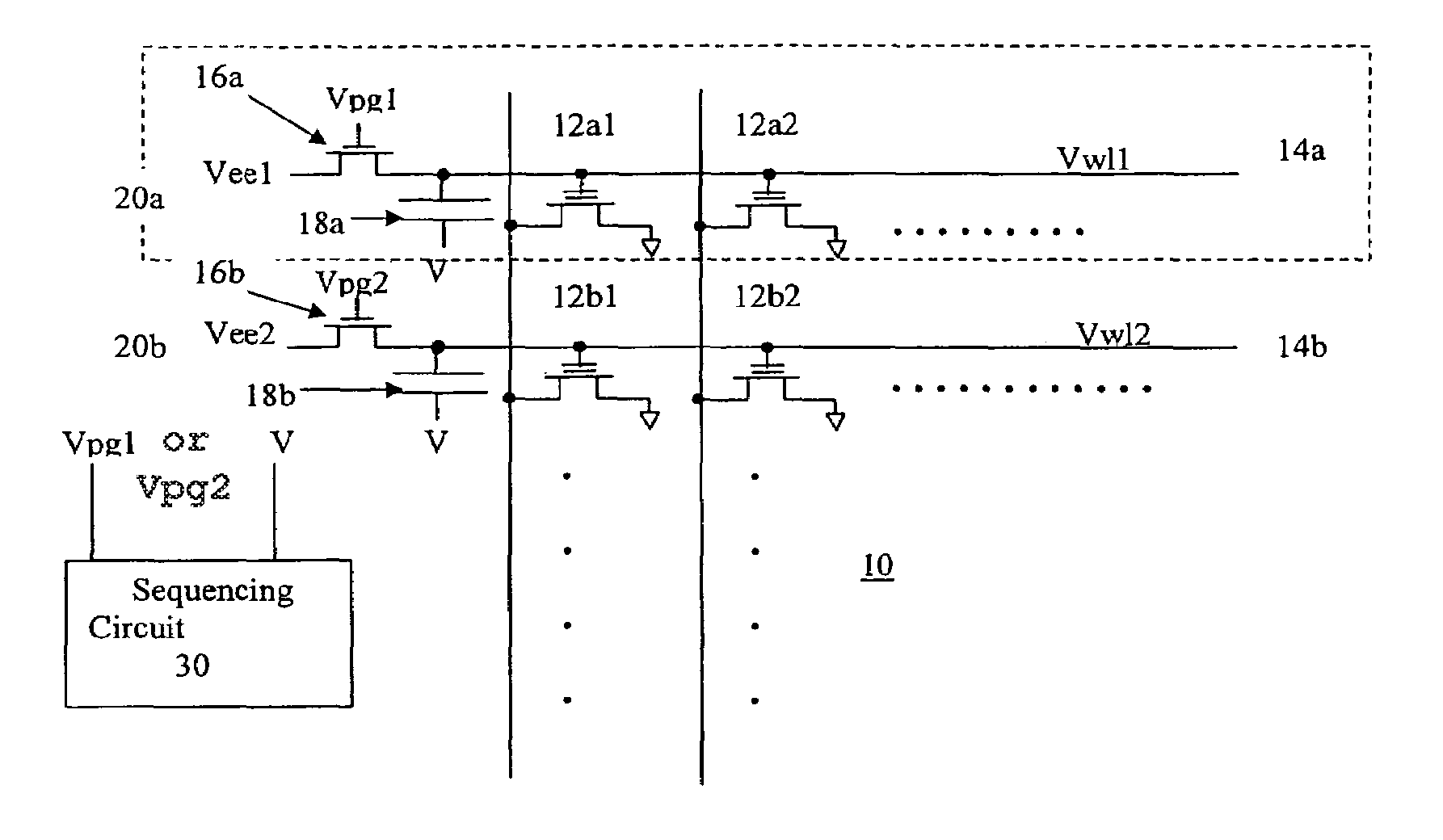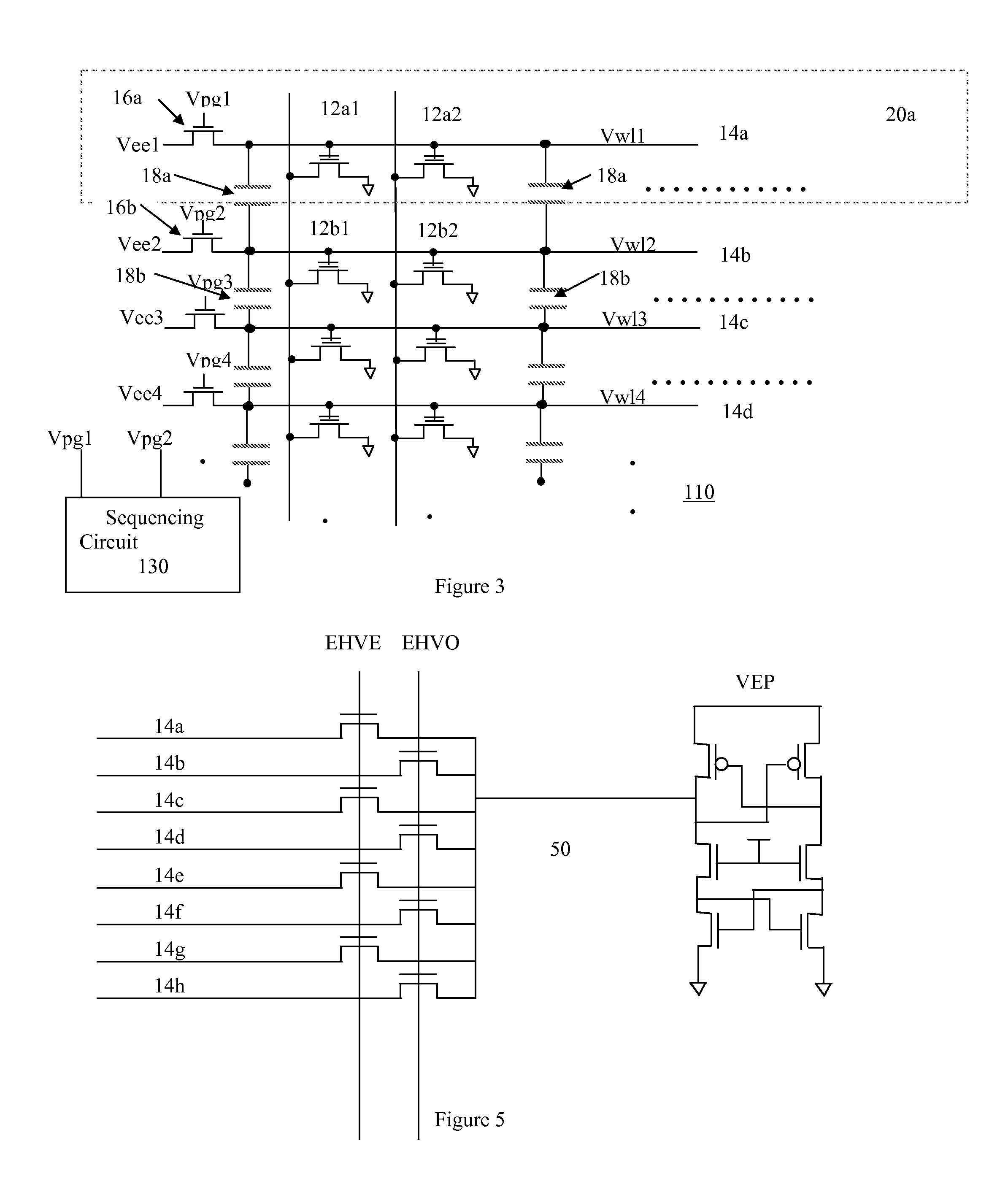Word line voltage boosting circuit and a memory array incorporating same
a voltage boosting circuit and word line technology, applied in static storage, digital storage, instruments, etc., can solve the problems of occupying precious die area reducing the voltage of word lines, etc., and achieve the effect of boosting the voltage and boosting the voltage on the word lines
- Summary
- Abstract
- Description
- Claims
- Application Information
AI Technical Summary
Benefits of technology
Problems solved by technology
Method used
Image
Examples
first embodiment
[0017]Referring to FIG. 1 there is shown a schematic circuit diagram of a non volatile memory array 10 of the present invention with an improved wood line voltage boosting circuit of the present invention. As discussed in the background of the invention and as discussed in U.S. Pat. Nos. 5,029,130 and 5,572,054, (whose disclosures are incorporated herein in their entirety), the array 10 comprises a plurality of memory cells, such as memory cell 12a1, 12a2, 12b1, and 12b2, arranged in a plurality of rows (e.g. rows 20a and 20b) and columns. Further, as well known in the art, the term “row” and “column” may be inter used interchangeably. In the preferred embodiment, each of the memory cells 12a1, 12a2, 12b1, and 12b2, is of the type disclosed in U.S. Pat. Nos. 5,029,130 and 5,572,054 in which the memory cell is a split gate floating gate type cell. A cross-sectional view of the memory cell 12 is shown in FIG. 6. The semiconductor substrate 80 in which these memory cells 12 are formed ...
second embodiment
[0023]Referring to FIG. 3, there is shown a memory array 110 of the present invention. The memory array 110 is similar to the memory array 10 in that it has a plurality memory cells 12 (such as memory cells 12a1, 12a2, 12b1, and 12b), arrange in a plurality of rows 20 such as row 20a and a plurality of columns. Each of the memory cells 12 arranged in the same row 20 are connected by a common word line 14, such as word line 14a, 14b, 14c and 14d. The word lines 14a, 14b, 14c and 14d are also designated as Vwl1, Vwl2, Vwl3 and Vwl4, respectively. The word line 14a or Vwl1 is connected to erase voltage Vee1 through a switching transistor 16a. Similarly, the word line 14b or Vwl2 is connected to erase voltage Vee2 through a switching transistor 16b. The word line 14c or Vwl3 is connected to erase voltage Vee3 through a switching transistor 16c, while the word line 14d or Vwl4 is connected to erase voltage Vee4 through a switching transistor 16d. Each of the switching transistors 16a, 16...
PUM
 Login to View More
Login to View More Abstract
Description
Claims
Application Information
 Login to View More
Login to View More - R&D
- Intellectual Property
- Life Sciences
- Materials
- Tech Scout
- Unparalleled Data Quality
- Higher Quality Content
- 60% Fewer Hallucinations
Browse by: Latest US Patents, China's latest patents, Technical Efficacy Thesaurus, Application Domain, Technology Topic, Popular Technical Reports.
© 2025 PatSnap. All rights reserved.Legal|Privacy policy|Modern Slavery Act Transparency Statement|Sitemap|About US| Contact US: help@patsnap.com



